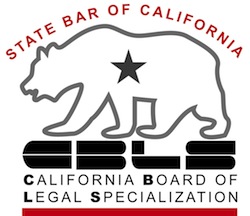
Your future living expenses may be the key to passing the bankruptcy means test.
Those who are under median income for their state have already passed the means test.
Those over median income move on to the expense portion of the test to calculate whether they have more than the allowed disposable income. Most often, your expenses are the escape hatch from being funnelled into Chapter 13 to get bankruptcy relief.
The allowable expenses
Understand that the expenses on the means test are a mix of real and artificial expenses. The budget may bear little relationship to your actual budget.
They are also future expenses. So, if paying the debt that’s going away in bankruptcy has kept you from paying for needed health insurance, medical care, child care, or tax catch up, the means test budget can include those item.
Let’s break down the elements in the four parts of the means test form central to passing bankruptcy means test.
Expenses controlled by national standards
Certain basic expenses are controled by national standards established by the IRS for those who owe taxes. Every debtor gets these deductions, wherever they live.
National standards give us numbers for
- Food, clothing, and personal care
- Out of pocket medical expense
Other deductions look to local standards, again supplied by the government.
- Housing
- Utilities and operating expenses for housing
- Transportation operating expenses
- Vehicle purchase or lease expense
Other necessary expenses
These are expenses that look to your outlays in particular areas, going forward.
- Taxes
- Involuntary deductions
- Term life insurance
- Court ordered payments other than support or garnishment for debt
- Education, including your job-related education or that of a disabled child
- Childcare
- Health care expenses that are over the national standard allowance.
- Some telephone/cell services
Additonal expenses
Again, this category looks to your personal situation after filing bankruptcy.
- Insurance for health, disability and health savings account
- Contribution to family members who are ill, elderly, disabled or unable to pay for such expenses
- Protection against family violence under federal law
- Additional energy expenses beyond the local standard
- Education expenses for children under 18
- Additional food & clothing expense beyond the national standard.
- Continuing charitable contributions
Debt payment
Finally, you can deduct payments you will make on certain debts.
- Debts secured by your home
- Vehicle loans
- Debt on income producing property
- Back family support
- Back taxes that get priority in bankruptcy
Also deductible is the amount that it takes to get current on loans secured by your home. So, what it takes to keep your home comes ahead of any payment to general unsecured creditors.
The bottom line
The sum of all of these monthly expense deductions is subtracted from the current monthly income figure, that was derived from looking at your income for the 6 full months before you file bankruptcy.
If that number, multiplied by 60 is less than $9,075, you pass the means test and can file whatever chapter suits your goals. Larger than that, there is a presumption that Chapter 7 is an abuse of the system.
If the number is greater than $9,075, a secondary test is triggered. Is that sum enough to pay 25% of your general unsecured debt? If not, you pass. If it is, the presumption of abuse arises. That presumption can be challenged, but that’s another post.
Caution
I have simplified this overview to provide a general picture of how this part of the means test works. Details, idiocyncrasies, and areas of dispute have been glossed over. Don’t think that you’ve mastered the means test with this overview.
But I do hope I’ve shown that simply being over median income does not mean you can’t file bankruptcy. You simply have to move on to the expense schedule to passing the bankrutpcy means test.
More
Cheat sheet for passing the means test
Who gets to skip the means test?





